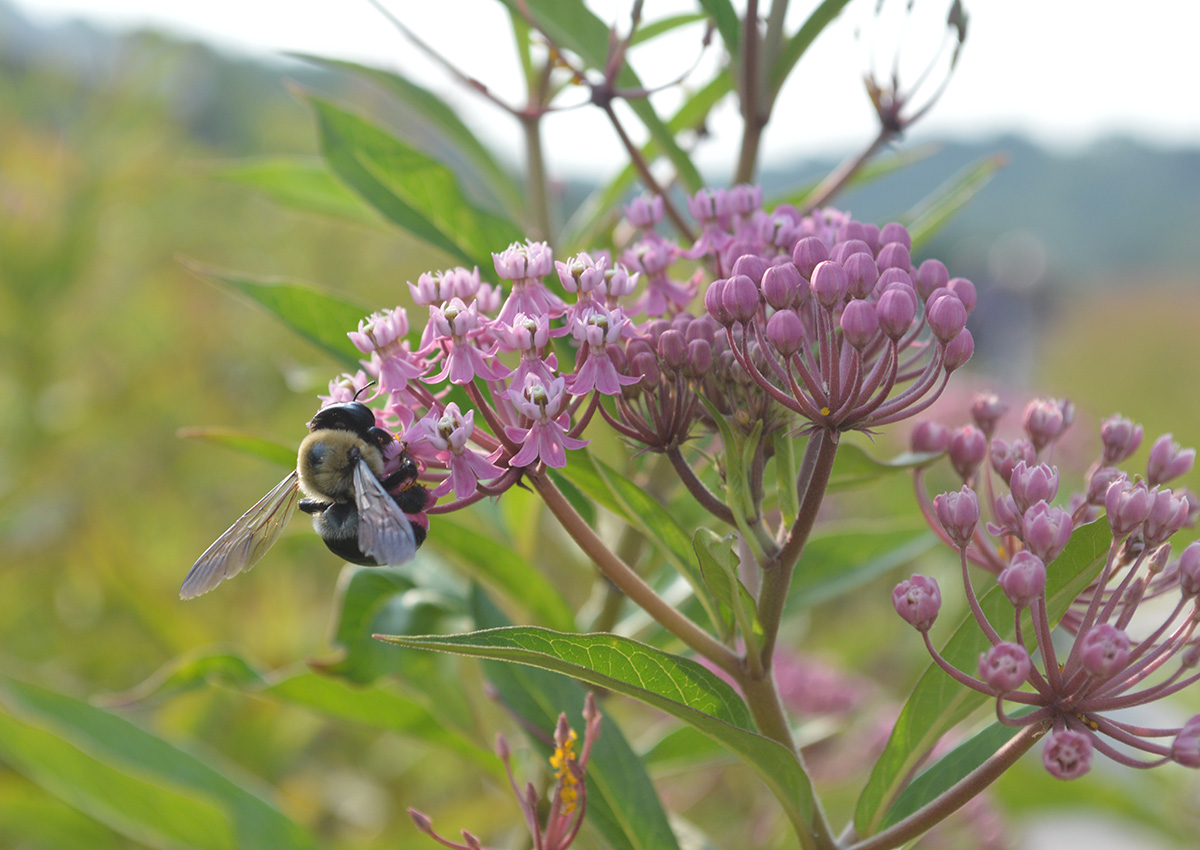
Bees are responsible for pollinating 80% of the world’s plants, including one-third of the food on our plates and many of the ornamental plants in our gardens. While European honeybees receive most of the credit, much of the work is done by lesser-known native bees. North America is home to over 4,000 species of native bees, many of which are in peril due to habitat loss.
The best way to support our native bees is by enhancing their native habitats. Gardeners can do this by planting a wide variety of locally native plants. Bees rely on their excellent color vision to find nectar. Brightly colored blooms in shades of blue, purple, white, and yellow are most attractive to these important pollinators. Here are a few regional favorites for attracting bees in the Southern Plains.

Blanket flower
Gaillardia spp. and cvs., Zones 3–9
The sunny blooms of blanket flower are a go-to among native-plant enthusiasts and for good reason. The plants are drought tolerant and bloom with abandon, attracting striped sweat bees, bumblebees, and many others. Most blanket flower varieties found on the market today are hybrids between the perennial common blanket flower (G. aristata, Zones 3–8) and annual Indian blanket (G. pulchella), the latter of which is native to our region. Indian blanket seed is widely available and germinates readily to add quick color to sunny gardens. While bees do utilize hybrids, you might look for these other native perennial blanket flowers at specialty nurseries:
- Pincushion daisy (G. suavis, Zones 6–9)
- Lanceleaf blanket flower (G. aestivalis, Zones 5–9)
- Red dome blanket flower (G. pinnatifida, Zones 7–10)

Purple poppy mallow
Callirhoe involucrata, Zones 4–9
Also called winecup, this stunning native ground cover produces an abundance of magenta blooms in early summer. Plants flower for several weeks, drawing native bees and butterflies. Purple poppy mallow may go dormant during the heat of midsummer unless supplemental irrigation is provided. But don’t worry—plants send up a fresh mat of deeply lobed foliage as the weather cools in autumn, which remains through the winter in my Zone 7 garden.

Milkweed
Asclepias spp. and cvs., Zones 3–10
More than just a monarch magnet, milkweed hosts a diversity of insect species and provides an excellent source of nectar for native bees. Several species of bumblebee, including four at-risk species, frequent milkweed along with carpenter bees, mining bees, sweat bees, and leafcutter bees. Milkweed is also an important resource for domestic honeybees. Here are four readily available species adapted to the Southern Plains:
- Swamp milkweed (A. incarnata, Zones 3–8)
- Showy milkweed (A. speciosa, Zones 3–9)
- Butterflyweed (A. tuberosa, Zones 4–9)
- Whorled milkweed (A. verticillata, Zones 4–9)

Sea holly
Eryngium spp. and cvs., Zones 2–10
Also called eryngo, these prickly plants are often confused for weedy thistles. While several native species grow throughout the Southern Plains, only two are readily available in the horticulture trade: the showy purple Leavenworth’s eryngo (E. leavenworthii, annual) and the prairie superstar rattlesnake master (E. yuccifolium, Zones 3–8). Garden centers more commonly carry European species and hybrids, all of which also attract bees and provide a unique structural accent in the garden.

Coneflower
Echinacea spp. and cvs., Zones 3–11
A favorite among butterfly gardeners, coneflowers also support a diversity of native bee species. In one ongoing study, over 40 species of native bees have visited a test garden of coneflowers. With the popularity of coneflowers in gardening, breeders have developed some rather unique hybrids. When selecting plants for pollinators, be sure to avoid the “double” varieties whose cones are filled with small frilly petals. These do not provide the nectar and pollen bees need. Most coneflowers available at garden centers are derived from purple coneflower (E. purpurea, Zones 3–8). Pale purple coneflower (E. pallida, Zones 3–10) is also commonly available, as is yellow coneflower (E. paradoxa, Zones 5–8). These three species are native to the Southern Plains.
—Kim Toscano is a horticulturalist, entomologist, garden designer, writer, and graphic designer. She previously hosted Oklahoma Gardening, a weekly PBS television program produced by the Oklahoma Cooperative Extension Service.
Fine Gardening Recommended Products

ARS Telescoping Long Reach Pruner
Fine Gardening receives a commission for items purchased through links on this site, including Amazon Associates and other affiliate advertising programs.

Planting in a Post-Wild World: Designing Plant Communities for Resilient Landscapes
Fine Gardening receives a commission for items purchased through links on this site, including Amazon Associates and other affiliate advertising programs.

The Nature of Oaks: The Rich Ecology of Our Most Essential Native Trees
Fine Gardening receives a commission for items purchased through links on this site, including Amazon Associates and other affiliate advertising programs.



















Comments
Log in or create an account to post a comment.
Sign up Log in